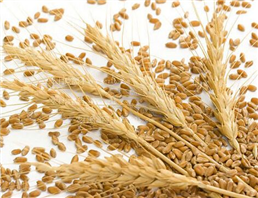Unveiling the influence of adaptation time on xylanase and arabinoxylan-oligosaccharide efficacy: a study on nutrient digestibility, viscosity, and scanning electron microscopy in the small and large intestine of growing pigs fed insoluble fiber
Amy L Petry, Nichole F Huntley, Michael R Bedford, John F Patience
 The experiment objective was to evaluate the
impact of xylanase over time on viscosity and digestibility in growing pigs fed
corn-based fiber. Twenty gilts with an initial body weight of 30.6 ± 0.2 kg (n = 5 per dietary
treatment) were fitted with t-cannulae in the medial jejunum and terminal
ileum, housed individually, and randomly assigned to one of four dietary
treatments: low-fiber control (LF) with 10.4% total dietary fiber (TDF), 30%
corn bran high-fiber control (HF; 26.4% TDF), HF + 100 mg xylanase/kg (XY; Econase XT 25P; AB Vista, Marlborough, UK),
and HF + 50 mg
arabinoxylan-oligosaccharide/kg (AX). Gilts were limit fed for three 17 d
periods (P1, P2, P3); each included 5 d adaptation, 2 d fecal collection, 3 d
ileal collection, 3 d jejunal collection, and 4 d related rate of passage
study. Data were analyzed as repeated measures using a linear mixed model with
surgery date as a random effect, and dietary treatment, period, and their
interaction as fixed effects. Jejunal and ileal digesta viscosity did not
differ among dietary treatments or periods (P > 0.10). There was a dietary treatment × period interaction
for the apparent jejunal digestibility (AJD) of dry matter (DM), gross energy
(GE), insoluble dietary fiber (IDF), neutral detergent fiber (NDF), total
arabinoxylan (T-AX), total non-starch polysaccharide (T-NSP), and TDF (P≤ 0.05). In P1, LF
had the greatest AJD of DM (15.5%), and relative to HF and AX, XY decreased it
(9.3%, 10.1 %, and 6.3%, respectively). In P2, the AJD of DM in XY was greater than
HF (11.7% vs. 9.1%) but did not differ from AX (10.5%). Relative to HF, in P3,
XY increased AJD of DM (11.7 vs 15.3%), and AX decreased it (7.2%). For the AJD
of NDF, AX performed intermediately in P1; in P2, relative to HF, XY, and AX
increased the AJD of NDF (8.4%, 13.1%, and 11.7%, respectively), and in P3, XY,
and LF did not differ (13.6 vs. 14.4%). A similar response was observed for the
AJD of IDF and TDF, except for XY having the greatest AJD of IDF, T-AX, T-NSP,
and TDF in P3 (P < 0.05). Compared to LF, irrespective of period, HF decreased the
apparent ileal digestibility (AID) and apparent total tract digestibility
(ATTD) of IDF, TDF, and NDF (P < 0.05). Relative to HF, XY partially mitigated this effect,
improving the AID and ATTD of TDF, IDF, and NDF (P < 0.05). Increased
corn-based fiber decreased nutrient digestibility, but XY partially mitigated
that effect in the small intestine through enhanced fiber digestibility when
given sufficient adaptation time.
The experiment objective was to evaluate the
impact of xylanase over time on viscosity and digestibility in growing pigs fed
corn-based fiber. Twenty gilts with an initial body weight of 30.6 ± 0.2 kg (n = 5 per dietary
treatment) were fitted with t-cannulae in the medial jejunum and terminal
ileum, housed individually, and randomly assigned to one of four dietary
treatments: low-fiber control (LF) with 10.4% total dietary fiber (TDF), 30%
corn bran high-fiber control (HF; 26.4% TDF), HF + 100 mg xylanase/kg (XY; Econase XT 25P; AB Vista, Marlborough, UK),
and HF + 50 mg
arabinoxylan-oligosaccharide/kg (AX). Gilts were limit fed for three 17 d
periods (P1, P2, P3); each included 5 d adaptation, 2 d fecal collection, 3 d
ileal collection, 3 d jejunal collection, and 4 d related rate of passage
study. Data were analyzed as repeated measures using a linear mixed model with
surgery date as a random effect, and dietary treatment, period, and their
interaction as fixed effects. Jejunal and ileal digesta viscosity did not
differ among dietary treatments or periods (P > 0.10). There was a dietary treatment × period interaction
for the apparent jejunal digestibility (AJD) of dry matter (DM), gross energy
(GE), insoluble dietary fiber (IDF), neutral detergent fiber (NDF), total
arabinoxylan (T-AX), total non-starch polysaccharide (T-NSP), and TDF (P≤ 0.05). In P1, LF
had the greatest AJD of DM (15.5%), and relative to HF and AX, XY decreased it
(9.3%, 10.1 %, and 6.3%, respectively). In P2, the AJD of DM in XY was greater than
HF (11.7% vs. 9.1%) but did not differ from AX (10.5%). Relative to HF, in P3,
XY increased AJD of DM (11.7 vs 15.3%), and AX decreased it (7.2%). For the AJD
of NDF, AX performed intermediately in P1; in P2, relative to HF, XY, and AX
increased the AJD of NDF (8.4%, 13.1%, and 11.7%, respectively), and in P3, XY,
and LF did not differ (13.6 vs. 14.4%). A similar response was observed for the
AJD of IDF and TDF, except for XY having the greatest AJD of IDF, T-AX, T-NSP,
and TDF in P3 (P < 0.05). Compared to LF, irrespective of period, HF decreased the
apparent ileal digestibility (AID) and apparent total tract digestibility
(ATTD) of IDF, TDF, and NDF (P < 0.05). Relative to HF, XY partially mitigated this effect,
improving the AID and ATTD of TDF, IDF, and NDF (P < 0.05). Increased
corn-based fiber decreased nutrient digestibility, but XY partially mitigated
that effect in the small intestine through enhanced fiber digestibility when
given sufficient adaptation time.
2024. J. Anim. Sci. 102: skad378
DOI:https://doi.org/10.1093/jas/skad378
Registration hotline: 021-57634675
fax: 021-57632800
Copy right : 上海亘泰实业集团
Collaboration & Sponsorship: 021-57634938 57631012
ASASHotline:021-67868428
Site Map | CNZZStatistics
address:Shanghai songjiang jiuting town nine new highway 90 lane 3 nine new commercial building 15 floor

WeChat ID:asaschina
The pig nutrition international BBS CSIS